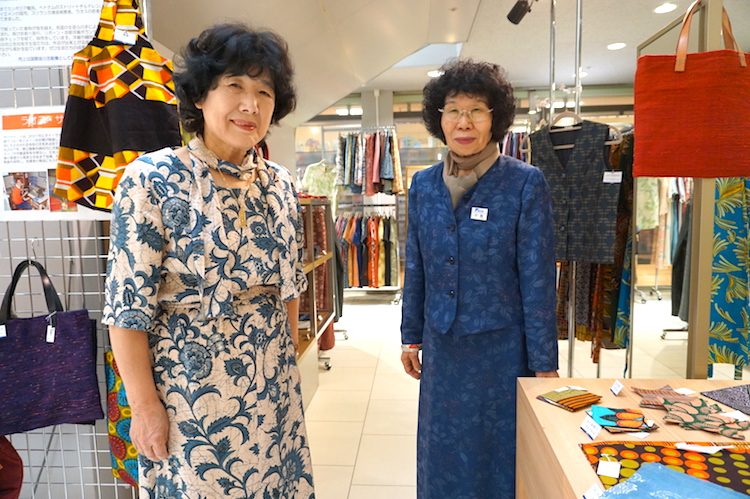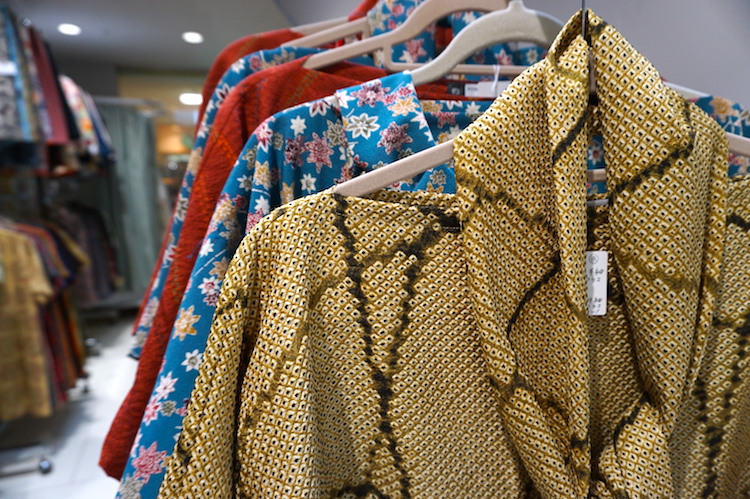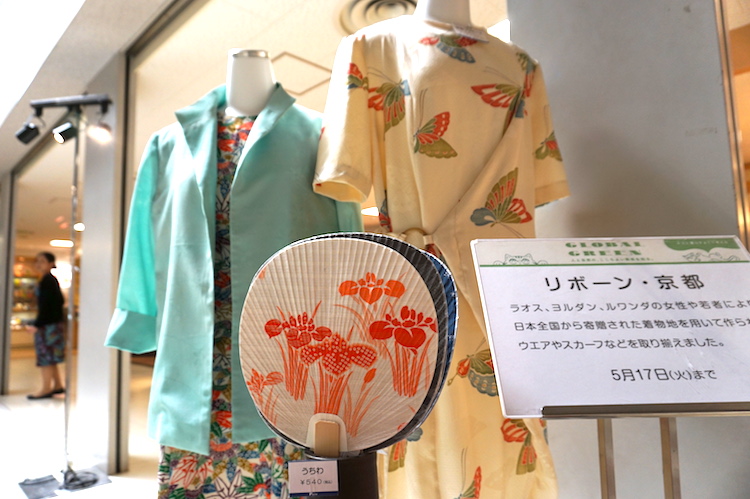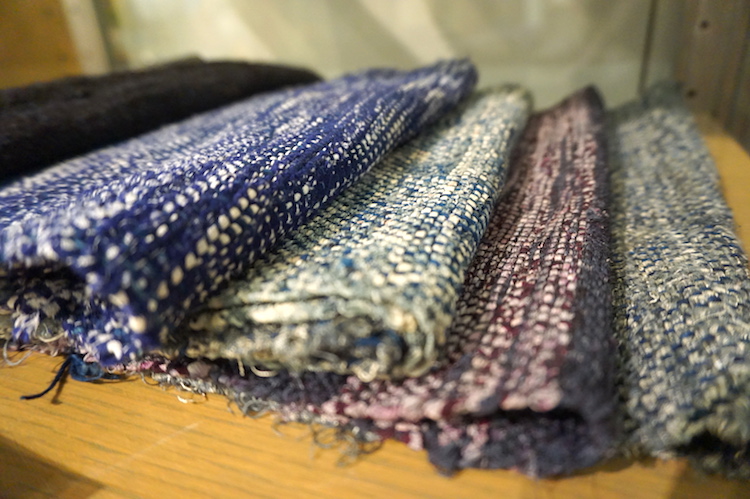From Kyoto to Kigali, women are empowered by upcycling kimonos
Published 21 July 2016 by Cherise Fong
Reborn Kyoto breathes new life into old kimonos. For more than 30 years, the nonprofit organization has been training marginalized women in countries such as Cambodia, Vietnam and Rwanda in professional dressmaking, while transforming high-quality silk into ready-to-wear fashion.
Kyoto, special report (words and photos)
In Kyoto, thousands of second-hand kimonos—traditional Japanese formalwear made from the finest silk—are waiting for their metamorphosis. A new kimono, tailor-made or not, is very expensive. A used one, even if only worn once or twice, not so much. For the past 30 years, Reborn Kyoto has been recycling old kimonos, while teaching marginalized communities to sew.
It all started in 1979, well before the famous leather Kuluska slippers, designed at Fablab Kamakura, were digitally downloaded, adapted to local materials and (re)made in Africa. Japanese community aid worker Masayo Kodama wanted to help Cambodian refugees fleeing the Khmer Rouge. As a child during WWII, she had also known hunger and suffering. As an adult with 20 years of experience in humanitarian work, she went to Cambodia, on the Thai border, to bring women refugees food and clothing.

Among the clothes donated by Japanese were shirts and pants, but also traditional kimonos, which Cambodians didn’t know how to wear, and which weren’t very practical for everyday life anyway.
From traditional kimono to western style
Among the volunteers, independent tailor Kimiyo Yamada had been experimenting with new styles made from discarded kimonos, but she lacked the manufacturing resources to realize her designs. Masayo Kodama had the idea to teach the refugees how to upcycle these used kimonos into fashion accessories and eventually western-style clothes that could be worn by anyone. The concept married recycling resources, financial independence and women’s empowerment.

From 1984, the organization began sending professional tailors to train women in Cambodian refugee camps. From 1992, this upcycling of kimonos spread to street children and women in Ho Chi Minh City, a minority mountain tribe in Vietnam, Yemeni women in Sana’a, tsunami victims in Sri Lanka, students in Savannakhet and women in Vienthong in Laos, South Shuna women in Jordan… but also to victims of the Tohoku earthquake in Japan evacuated to Kyoto, and more recently women and unemployed youth in Kigali, Rwanda.
While Reborn Kyoto has always worked in collaboration with another charity organization, or since 2007 with support from the Japanese Ministry of Foreign Affairs, and since 2014 with corporate sponsorship for African development, the little NPO’s biggest problem is always funding.
Presentation of Reborn Kyoto (2016):
Masayo Kodama is president of the organization, known as Reborn Kyoto since 2002. Its young manager Hiroko Makita quit a career in IT to redirect her skills toward helping people in developing countries, further seduced by the good idea and the good feeling of recycling Japanese kimonos.
Currently, Reborn Tokyo continues to organize workshops and courses (strictly limited to three years to earn a diploma) in Japan, Laos, Jordan and Rwanda. The NPO is also looking for resellers and distributors for its products (in the U.S. it has retail points in San Francisco, New York, Boston, Washington D.C.), in addition to its own “flagship” store just around the corner from its office in Kyoto.

Technically, the fine kimono silk is transformed into ready-to-wear clothes by a collaboration of volunteer, expert and apprentice hands—Japanese, Laotian, Jordanian or Rwandan. All the kimonos are first carefully washed and ironed, sometimes dyed, then meticulously unsewn by about 25 volunteers in Kyoto and Osaka, mostly Japanese women retired from the declining kimono manufacturing industry. Then the silk becomes raw material and is transported to wherever the trainees are waiting.

Learning by doing in Kigali
In the Rwandan capital of Kigali, some 50 trainees between the ages of 16 and 35, mostly women, are scrupulously selected to follow the intensive three-year course, learning by doing. A Japanese instructor is translated into Kinyarwanda by a local specialist, so that students can learn in their native language. These young people without professional skills but full of motivation also have the privilege of working on Juki brand industrial sewing machines, imported from Singapore and bearing a red and white sticker that reads “From the People of Japan”. At the end of the first and second years, the finished garments are evaluated by experts, and the trainees are paid money for their work, according to the quality of the couture. Just like in top fashion schools, they graduate with a fashion show of their creations.
“Usually people start learning to sew by working with cotton, which is the easiest to handle. Then they move on to polyester, wool, and finally silk. But here we use fabric from kimonos, so we train our students directly on silk. By the end of the course, they are highly skilled in dressmaking!”
Masayo Kodama, president of Reborn Kyoto
Most of the graduates are able to find work in the local textile industry—by adapting their technique to kitenge, an African fabric—while the most ambitious start their own line of clothing. How long before we see the next new generation of African fashion makers?
More information on Reborn Kyoto
